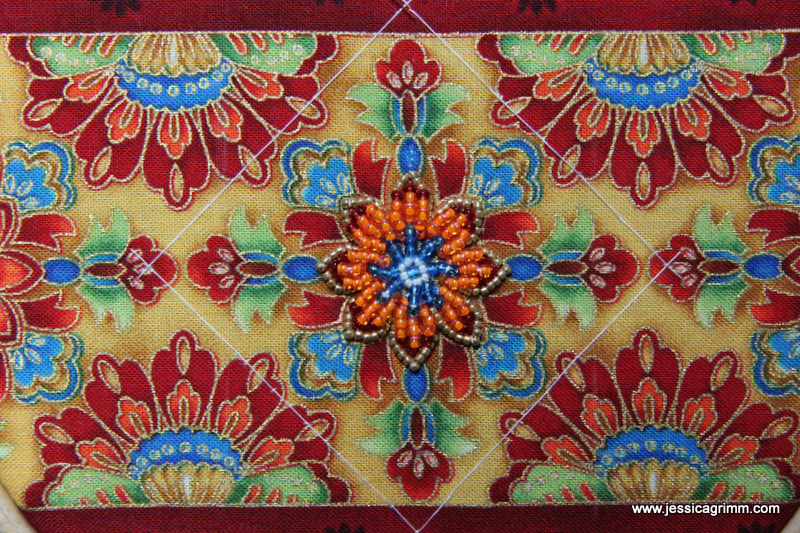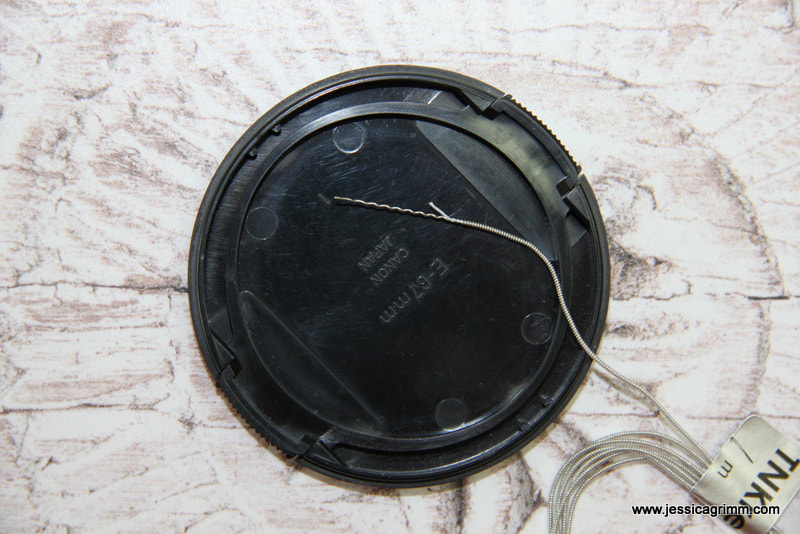|
Months ago, I saw a post on Facebook in which Yvette Stanton worked a bead embroidery kit by Merrilyn Whittle. The design was so lovely, that I ordered the same kit :). This weekend, I had finally time to dabble with it and write this review. If you are thinking of trying bead embroidery yourself, do visit the blogs of Dima Santina and Margaret Cobleigh. Both ladies are beading away on two very different projects: Hanabatake by Margaret Lee and Wild Child by Mary Alice Sinton. Besides well-written instructions with many clear pictures, the photograph above shows you the other contents of the kit. As you can see everything is clearly labelled. And the quantities of the beads and threads are very generous. Apart from the kit, I had also bought a bead shoe and a wooden koma. Me and koma never became friends, but having a bead shoe is definitely a plus. Regarding the koma, I feel that you can stitch this design without one. However, bead purists might disagree :). I will definitely give the koma another try in the future and will probably watch some footage on Youtube to get an idea how to hold this piece of equipment when beading. And off I went: beading away on the central flower. With hindsight, this was probably the most enjoyable part of the whole design. It makes use of two different padding techniques and they were techniques I had never used before. I learned a lot and I will certainly incorporate both techniques in future embroidery pieces. And this is how the piece progressed. I wasn't going for perfection and only took things out when they were really disrupting the piece. I just wanted to have a nice embroidery experience. And that's what this excellent kit certainly delivers. The finished design is only 6x6cms and can be stitched as a weekend project. I am unsure if this project would suit an absolute embroidery beginner; I am afraid that I take too many things for granted after about 34 years of stitching :). And this is what the finished piece looks like. It is intended to be a Christmas decoration. In lieu of a tree, it now happily hangs on the knob of my kitchen cupboard. I've thoroughly enjoyed stitching this little gem and I've learned a few new things. As Merrilyn Whittle is based in Australia, you might need to pay custom duties when ordering this kit. I had to, and all in all I paid a total of €72,73 or $83,89 (kit+shipping+tax). I think, as there are so many talented embroidery designers in Australia, it is high time Australia applies for EU-membership :).
11 Comments
Before I am going to tell you what the above entails, I want to say a huge thank-you to all who responded to last week's blog post! There were some great suggestions and I was able to implement one straight away: I became a member of the Society for Embroidered Work by invitation. How cool is that? Do visit their website and follow the links to all the amazing embroidery artists on there! And one more laugh about the craft-tradition-art debate: I picked up the embroideries I had displayed at the Pilatushaus in Oberammergau. It is end of season and I didn't want them locked up until the spring. I was told by a fellow member of this organisation that nothing had sold. The reason given? I needed to understand that embroidery had no great tradition here... Strange! Only a few villages down the main road, I had just been told the previous week that I couldn't join the artist society BECAUSE embroidery had a strong craft tradition here! Once a year, there is a textile fair not far from where I live. The buildings of the monastery of Benediktbeuern are filled with 140 textile related businesses. Always fun to have a walk around. Most is sooooo exclusive that it is way out of my budget, though. Each year me and my husband catch up with Thomas und Marianne Held who sell books on textiles. We met them one year in Osnabrück at Nadel & Faden where we were neighbours. They are such fun and generous people! This year I bought two books on textile collections held in Germany. Do visit their website as they really do have a great selection on hard to find second-hand books on textiles. Apart from this happy re-union, I stumbled upon Christine Asböck of 77°Nord. She makes beautiful bracelets with something which looks like very fine pearl purl. I immediately fell in love with the pretty braid patterns and bought a bracelet. The combination of reindeer leather and silver thread is so classical. I watched Christine work on a new bracelet and was amazed that she braids first and then sews the whole braid down using very fine nylon thread. I also learned that this type of craft is called Tenntrådsbroderier or tin thread embroidery. It has been traditionally practiced by the Sami people of Northern Scandinavia as a winter craft to earn some extra money. I was especially curious about this Tenntråd, which looks like pearl purl. It was easy to find a Swedish supplier and so I ordered a variety of silver plated, gilt and coloured threads in various thicknesses. Contrary to pearl purl, this thread has a textile core. It cannot be stretched like pearl purl. But it is still great fun! It can of course be used in the traditional way to make a braid and use it in goldwork embroidery. It can also be used as is in goldwork embroidery as a substitute for pearl purl. However, you would need to use the very fine nylon thread to be able to sew it down invisibly. You cannot pull the thread between the coils as the thread does not like to be stretched. As this particular supplier has a wide range of coloured thread, I am sure I will order some more in the future and get creative!
|
Want to keep up with my embroidery adventures? Sign up for my weekly Newsletter to get notified of new blogs, courses and workshops!
Liked my blog? Please consider making a donation or becoming a Patron so that I can keep up the good work and my blog ad-free!
Categories
All
Archives
July 2024
|
Contact: info(at)jessicagrimm.com
Copyright Dr Jessica M. Grimm - Mandlweg 3, 82488 Ettal, Deutschland - +49(0)8822 2782219 (Monday, Tuesday, Friday & Saturday 9.00-17.00 CET)
Impressum - Legal Notice - Datenschutzerklärung - Privacy Policy - Webshop ABG - Widerrufsrecht - Disclaimer
Copyright Dr Jessica M. Grimm - Mandlweg 3, 82488 Ettal, Deutschland - +49(0)8822 2782219 (Monday, Tuesday, Friday & Saturday 9.00-17.00 CET)
Impressum - Legal Notice - Datenschutzerklärung - Privacy Policy - Webshop ABG - Widerrufsrecht - Disclaimer












 RSS Feed
RSS Feed